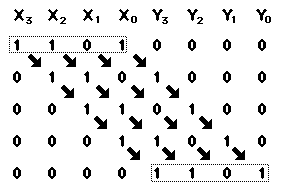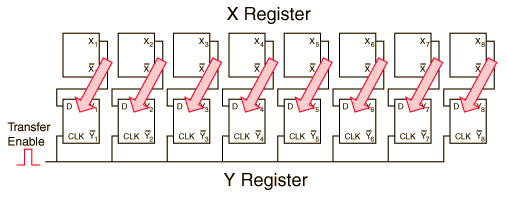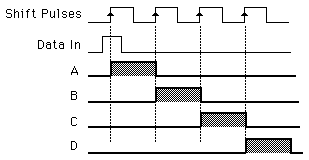Serial Data Transfer

 |
As an example of serial data transfer using the shift register approach, a set of four shifts triggered by clock pulses places the contents of the X-register into the Y-register. Since four clock cycles are needed, it is much slower than parallel transfer, but is simpler and cheaper. |
| Flip-Flops |
Electronics concepts
Digital circuits
Data Transfer
J-K Flip-Flop Applications
Reference
Tocci
Digital Systems, Sec 5-18
| HyperPhysics*****Electricity and magnetism | R Nave |


